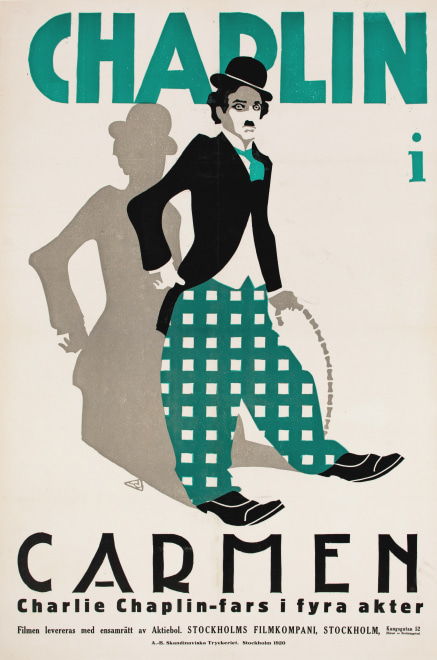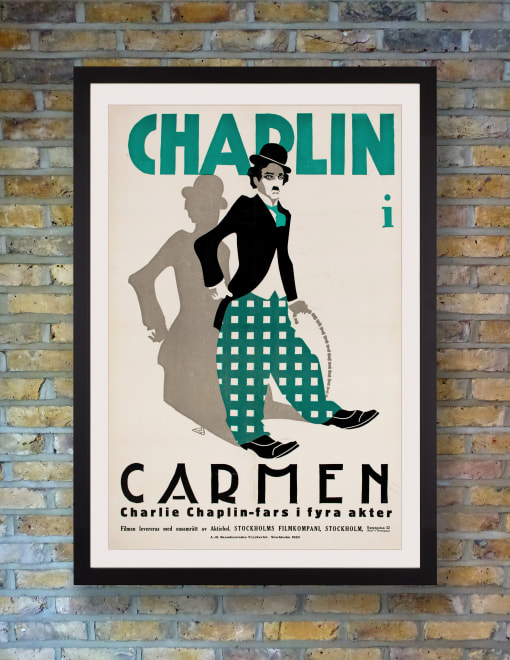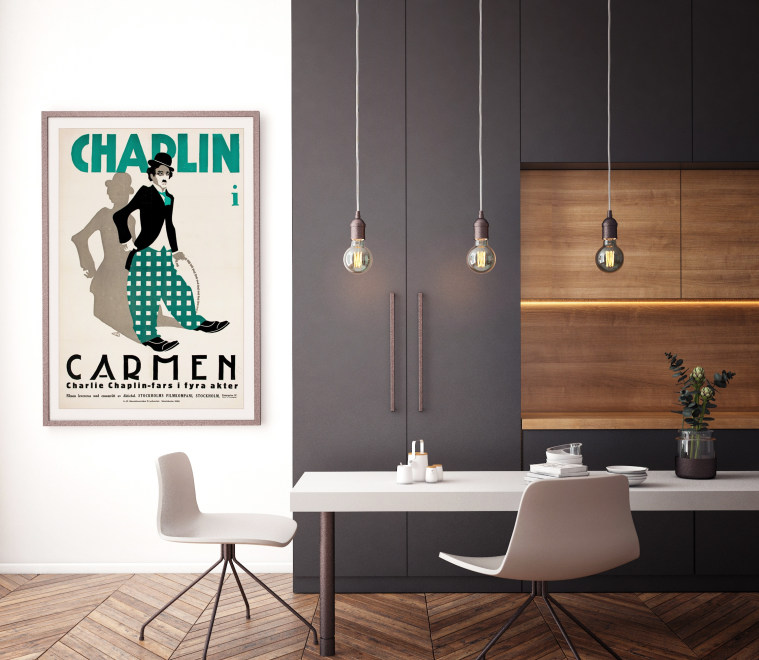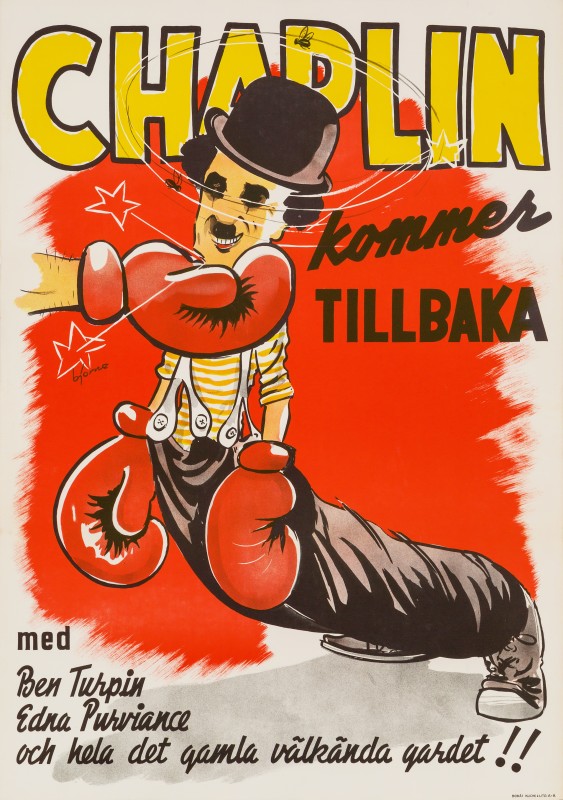An extremely rare early linocut poster for the first Swedish release of Charlie Chaplin's 1915 comedy short Burlesque on Carmen, his thirteenth film for Essanay Studios. A parody of Cecil B. DeMille’s 1915 Carmen starring Geraldine Farrar and the near simultaneous release of William Fox’s Carmen starring Theda Bara, Chaplin played a goofy Spanish officer seduced by Edna Purviance as the beautiful gypsy Carmen. Chaplin closely followed the structure of the DeMille production, seemingly stabbing Carmen to death in jealous revenge, only to reveal a prop knife at the end as both Chaplin and Purviance turn laughingly to the camera in one of the earliest examples of breaking the fourth wall in cinema history. Chaplin’s tightly-paced two-reeler was originally released in late 1915, but when he left Essay for a more lucrative deal with Mutual, Essanay reworked the film into a longer four-reel version for 1916 release by adding discarded scenes and new footage shot with popular comedian Ben Turpin. Incensed by Essanay’s unauthorised alteration of his work, Chaplin sued the studio, but failed to stop distribution of the inferior expanded version, which would be the version seen by audiences for decades following. The two versions have led historian Ted Okuda to name Burlesque on Carmen as both the best and worst of Chaplin’s fourteen Essanay comedies - with Chaplin’s original cut naturally the superior work.
Boldly linocut printed in black, grey and teal green, this stylish Art Deco style Swedish One Sheet poster for the picture presents a startlingly simple and modern appearance compared to the painterly American movie posters of the time, which were saturated with realistic detail and colour. The linocut printmaking technique is a variant of woodcut in which a sheet of linoleum is used for the relief surface. A design is cut into the linoleum surface, inked with a roller called a brayer, and then impressed onto the paper. As the technique favours flat planes of colour rather than texture and detail, the Swedish poster artists who employed this printing method created bold compositions of geometric shapes and sweeping curves, their dynamic designs standing out splendidly against unprinted or single colour backgrounds. Exceedingly rare, these Swedish linocut posters were produced only for a short period of time until the early 1920s. This exquisite example is likely to be one of only a handful of surviving copies for this picture.
Condition
Excellent (A-)
Conservation backed on linen. Backing and light colour touching has smoothed and diminished one vertical and three horizontal folds. Double crease to upper portion of vertical fold. Some faint ghosting to folds in white ground. Small surface gouge or ding to white ground at right of "H" in "Chaplin." Printed slightly off register. A few printer's ink spots and smudges, which only add to the charm of this hundred-year-old linocut print. Image and colours otherwise excellent.










